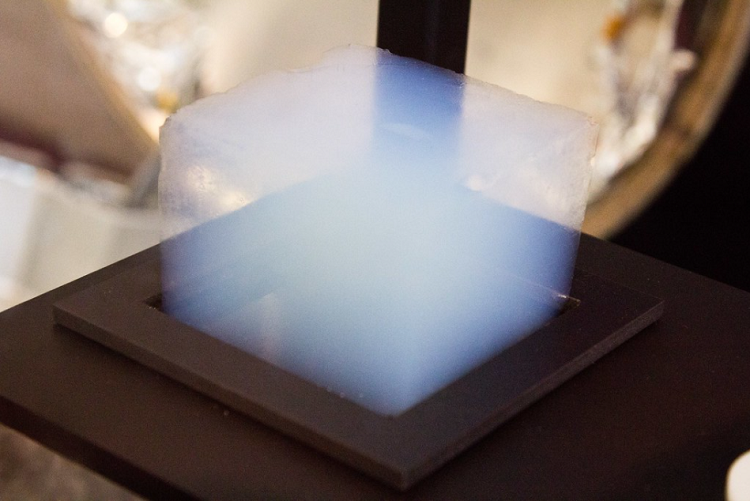

SEARCH
As a new type of insulation material, aerogel thermal insulation material is gradually emerging in various fields and has been widely used. Next, Xiaobian will introduce the basic knowledge of aerogel thermal insulation materials and their applications.

Introduction of aerogels thermal insulation materials
Aerogel is a kind of solid substance which is composed of a matrix and air with nanometer porous structure. Among them, the matrix is mostly silica, metal oxide, etc., and air occupies more than 90% of the aerogel. Because the hole size in the aerogel is much smaller than the average free path of the gas, the gas is subjected to great resistance when it flows inside, thus achieving good thermal insulation performance. At the same time, the low density and porous structure of aerogel also give it lightweight and high specific surface area, making it a significant advantage in the field of thermal insulation.
Second, the excellent performance of aerogel thermal insulation materials
1, low thermal conductivity: aerogel thermal insulation materials have a very low thermal conductivity, usually between 0.013-0.028 W/(m·K), far lower than traditional thermal insulation materials. This means that it can reduce the transfer of heat and provide excellent thermal insulation.
2, light material: The density of aerogel insulation material is usually between 3kg/m³, very light. At the same volume, the thermal insulation effect of aerogel is far more than that of traditional materials, which can reduce the weight of buildings and equipment, which is conducive to reducing costs and achieving more flexible designs.
3, high specific surface area: aerogel has a high specific surface area, which means that its surface can absorb more air molecules, further improving the heat insulation effect.
4, fire performance: Because the aerogel itself does not burn, the aerogel thermal insulation material has good fire performance. It does not burn, nor does it spread fire around, so it is widely used in construction, equipment and other fields.
5, green environmental protection: the components of aerogel are mostly inorganic substances, which have no adverse effects on the environment and human health. At the same time, the production process of aerogel is relatively environmentally friendly, helping to reduce carbon emissions and promote sustainable development.
Third, the shortcomings of aerogel thermal insulation materials
1, the cost is expensive: aerogel insulation materials are usually more expensive than traditional insulation materials. The preparation process is complex, which makes aerogel insulation less economical and practical in some applications.
2, easy to brittleness: aerogel insulation materials usually have low compressive strength and durability. They may be vulnerable to external impact or compression and rupture, especially in some high-pressure or high-load environments.
3, low output: due to the complex preparation process of aerogel, aerogel can not be produced on a large scale, so the output is relatively low
Fourth, the application field of aerogel thermal insulation materials
1, construction industry: In the field of construction, aerogel insulation materials are mainly used for wall insulation, which can significantly reduce the energy consumption of buildings and improve energy efficiency. In addition, aerogels can also be used to insulate roofs, Windows and other parts, providing strong support for creating energy-efficient buildings.
2, industrial field: in the petrochemical industry, pipeline insulation and other fields, aerogel due to its excellent thermal insulation performance and lightweight characteristics are widely used in equipment thermal insulation. It reduces heat loss, improves equipment operating efficiency and extends service life.
3, automotive industry: In the automotive manufacturing, aerogel materials can be applied to the engine cabin, exhaust pipe and other key parts of the thermal insulation. Improve fuel economy and driving comfort by reducing the impact of temperature fluctuations on vehicle performance.
4, electronic products: with the miniaturization and precision development of electronic equipment, aerogel insulation materials are widely used in the heat dissipation design of electronic products because of their excellent thermal insulation performance and lightweight characteristics. It protects electronic components from high temperatures and improves product stability and reliability.
5, aerospace: In the aerospace field, aerogel is used in the thermal protection system of spacecraft because of its excellent thermal insulation performance and high strength. By providing the spacecraft with a reliable insulation layer, it protects the internal structure and instruments from the effects of high or low temperatures.
6, other fields: In addition to the above application areas, aerogels are also used in military, daily thermal insulation, biomedical and other fields. Its diverse application scenarios fully reflect the great potential of aerogel as an excellent insulating material.
Aerogel thermal insulation material is a kind of thermal insulation material with excellent performance and has a wide application prospect. Its low thermal conductivity, light weight, good fire performance, although easy to crisp and high cost, but it does not affect its construction, equipment and other fields of one of the ideal insulation materials.
Related